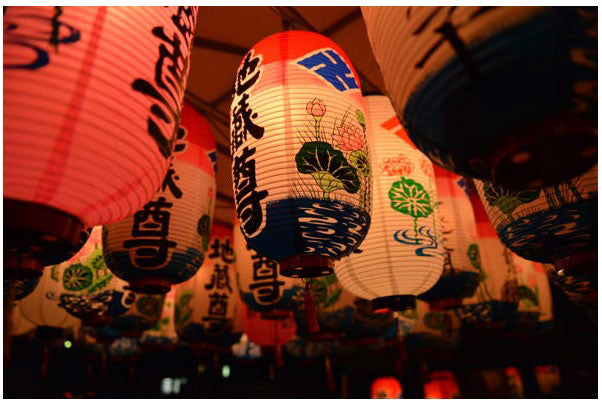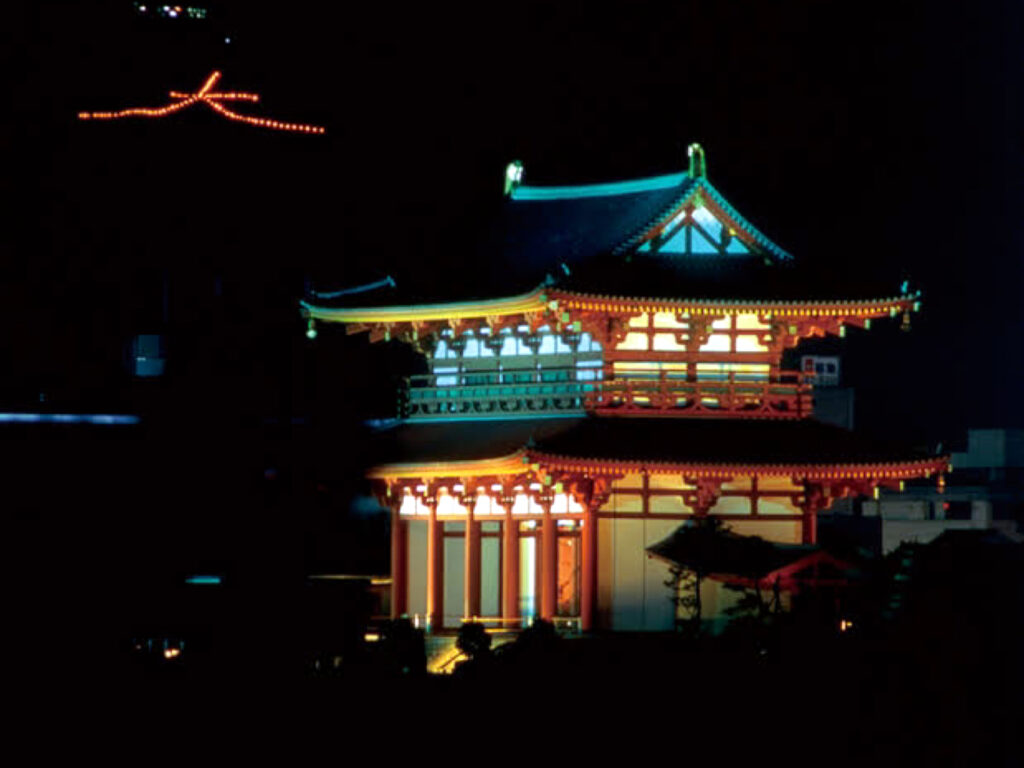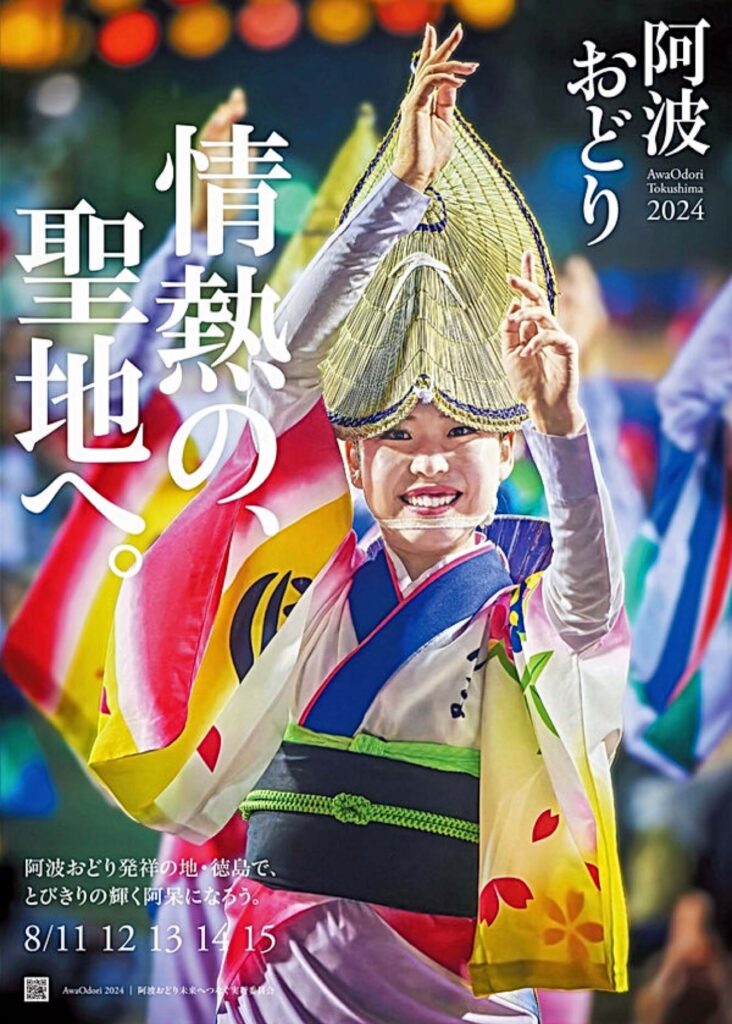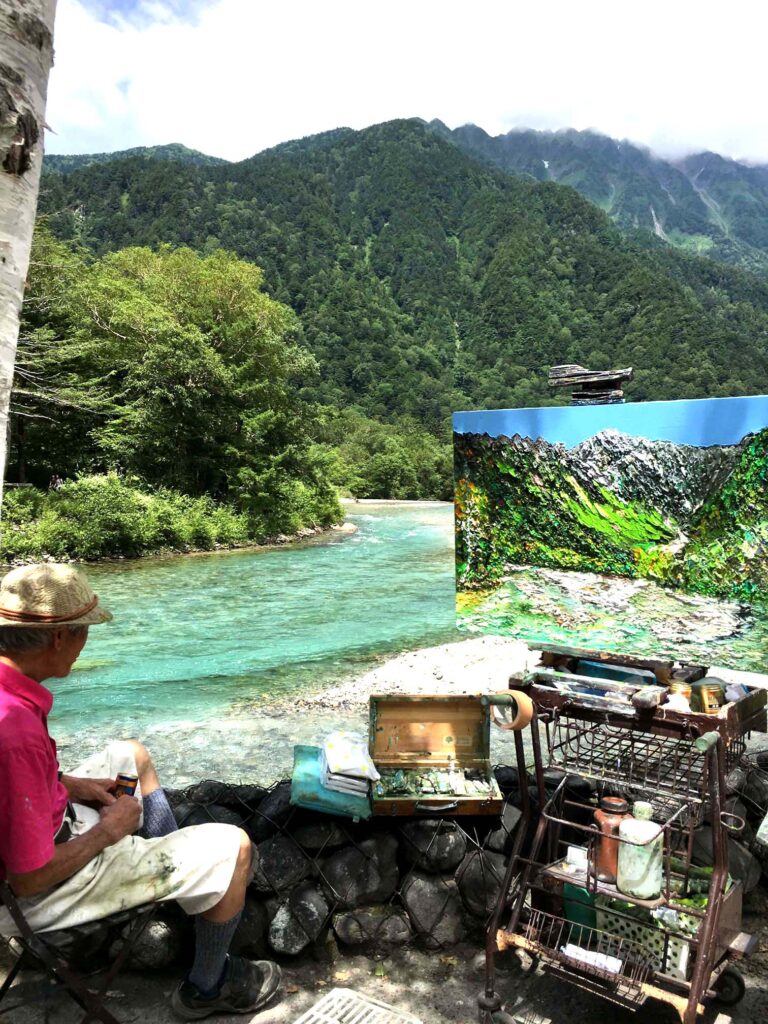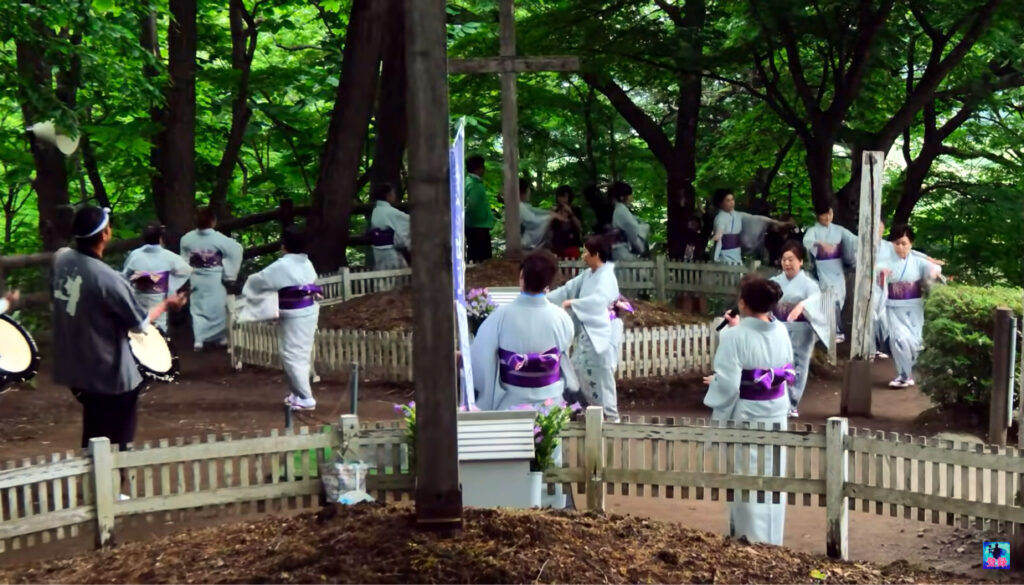
It’s been so hot that it’s more appropriate to send a midsummer greeting card than a late summer one. I keep getting ‘Heatstroke Alert’ notifications from the Yahoo Disaster Alert app on my smartphone. For us elderly folks, staying indoors is the best option.
This summer, I’ve been watching Japanese festivals and Bon dances extensively on YouTube. I never knew there were so many diverse festivals and Bon dances across Japan. At the same time, I was reminded of how much the times have changed, making it possible to see such things only through a medium like YouTube.
Among all this, what intrigued me the most was a Bon dance called ‘Nanyadoyara,’ passed down in the northern Tohoku region of North Okushu. It’s a Bon dance handed down in the area from southern Aomori Prefecture to northern Iwate Prefecture, as well as in the former Nambu domain area of the Oga region in Akita Prefecture. It is named ‘Nanyadoyara’ after the lyrics of the accompanying song. It is said to be the root of Japanese Bon dances and the oldest Bon dance in Japan. Although the content of the song varies by region, it generally goes like this: ‘Nanyado Nasarete Nanyadoyara Nanyadore Nasarede Noo Nanyadore Nanyadoyarayo Nanya Nasarete Saae Nanyado Yarayo Nanya Nasarete Nanyadoyara Nanyado.’ The lyrics are completely incomprehensible, like some kind of incantation. Due to the enigmatic nature of these lyrics, various researchers throughout history have shown interest, proposing theories such as the ‘Sanskrit theory,’ ‘Dowa theory,’ or even ‘love song theory.’ Folklorist Kunio Yanagita suggested that the lyrics, which he learned from a village girl, mean ‘whatever you do, do as you like,’ and he interpreted it as a love song directed at men on special festival days. However, this explanation has not been entirely convincing, and the mysterious lyrics remain unexplained.
However, in the Taisho era, a theologian from Ichinohe Town in Iwate Prefecture, Eiji Kawamorita, took up this Aomori folk song in his book ‘Jews in Japan’ and made a big splash by asserting that if the pronunciation of ‘Nanyadoyara’ is read as ‘Nagyadoyara’ in Hebrew, it suddenly turns into a song with meaningful words. Kawamorita explained how a Hebrew-rooted poem transformed and took root as a Japanese folk song, presenting several examples of Japanese folk song lyrics and accompanying words that can be read in Hebrew.
To this day, there’s a village in Aomori Prefecture called Herai, which some believe might be a Hebrew village, meaning an ancient Israelite settlement. In the dialect of Herai Village, fathers are sometimes called ‘Ada’ and mothers ‘Aba,’ which some suggest could be transformations of ‘Adam’ and ‘Eve.’ There are numerous similarities between Japanese and Hebrew, such as ‘Akinafu’ (to buy), ‘Ari-Gad’ (lucky for me), ‘Essa’ (I’ll lift it up), ‘Kaku’ (to write), ‘Komaru’ (to be troubled), and ‘Nikumu’ (to avenge), and some words are almost identical.
Today, the theory that the Japanese and Jews share a common ancestry often comes up in discussions about history, and through Bon dances, I’ve gained new insights, deepening my interest in Japan’s ancient history.
残暑見舞いどころか暑中見舞いを出してもおかしくない暑さが続いています。スマホに入れているヤフーのアプリ「防災速報」からは絶えず「熱中症警戒アラート」が飛び込んできます。我々老人は外に出ないことが一番。
今年の夏はYouTubeで日本の祭りや盆踊りを隈なく見ることになりました。日本国中にこんなに多くてこんなに多彩な祭りや盆踊りがあることを初めて知りました。と同時に、YouTubeという媒体がなければ見ることができない時代の変化に改めて感じ入った次第です。
そんな中で最も興味を引いたのは、東北地方の北奥羽に伝承されている『ナニャドヤラ』という盆踊りです。青森県南部から岩手県北部にかけての地域及び秋田県男鹿地方の旧南部藩領内に伝わる盆踊りで、その「はやし歌」の歌詞からとられて『ナニャドヤラ』の名で呼ばれています。日本の盆踊りのルーツともいわれ、日本最古の盆踊りだそうです。お囃子の歌の内容は地域によってばらつきはありますが、おおむね「ナニャド ナサレテ ナニャドヤラ ナニャドヤレ ナサレデ ノーオ ナニャドヤレ ナニャドヤラヨー ナニャド ナサレテ サーエ ナニャド ヤラヨー ナニャド ナサレテ ナニャドヤラ ナニャド」という内容です。全く意味不明です。まるで呪文のような歌詞です。あまりにも意味不明な歌詞のために古来さまざまな研究者が興味を持ち、これまで「梵語説」や「道歌説」、また「恋の歌説」などが提言されてきました。民俗学者の柳田国男は、村の娘に教わったというその歌詞の意味は「なにヤとやーれ なにヤとなされのう」ということで、これを柳田は「何なりともせよかし、どうなりとなさるがよい」 と、祭りという特別な日に、男に向かって呼びかけた恋の歌だとしました。しかしながら、これとて説得力はなくその不可解な歌詞を解明するまでには至りませんでした。
ところが、岩手県一戸町出身の神学博士・川守田英二が大正時代にその著『日本の中のユダヤ』でこの青森民謡を大きく取り上げ、「ナニャドヤラ」の発音を「ナギャドヤラ」としてヘブライ語で読むと一変して意味のある言葉を有する唄に様変わりすると唱えたので大騒ぎになりました。川守田はいかにしてヘブライルーツの詩が日本民謡に姿を変えて土着したかを解説し、ヘブライ語で書かれた日本民謡の歌詞や囃子言葉があることを複数の事例をもって紹介したのです。
今日まで青森県に存在する戸来(ヘライ)村は、古代イスラエルの集落を意味するヘブライ村ではないかとも語り継がれ、戸来村の方言では父親を「アダ」、母親を「アバ」と呼ぶことがあるそうですが、これは「アダム」と「エヴァ」が転化したものではないかと指摘されています。日本語とヘブライ語の類似は実は枚挙に暇がなく、「アキナフ(買う)」、「アリ・ガド(私にとって幸運です)」、「エッサ(持ち上げるぞ)」、「カク(書く)」、「コマル(困る)」、「ニクム(復讐する)」などなど、中には日本語そのままの言葉も少なくありません。
今日、日ユ同祖論として、日本とユダヤの関係を歴史に遡ってよく話題にも上っていますが、盆踊りを通してまた新たな知見を得、日本の古代史にいっそうの興味を呼び起こしてくれました。

